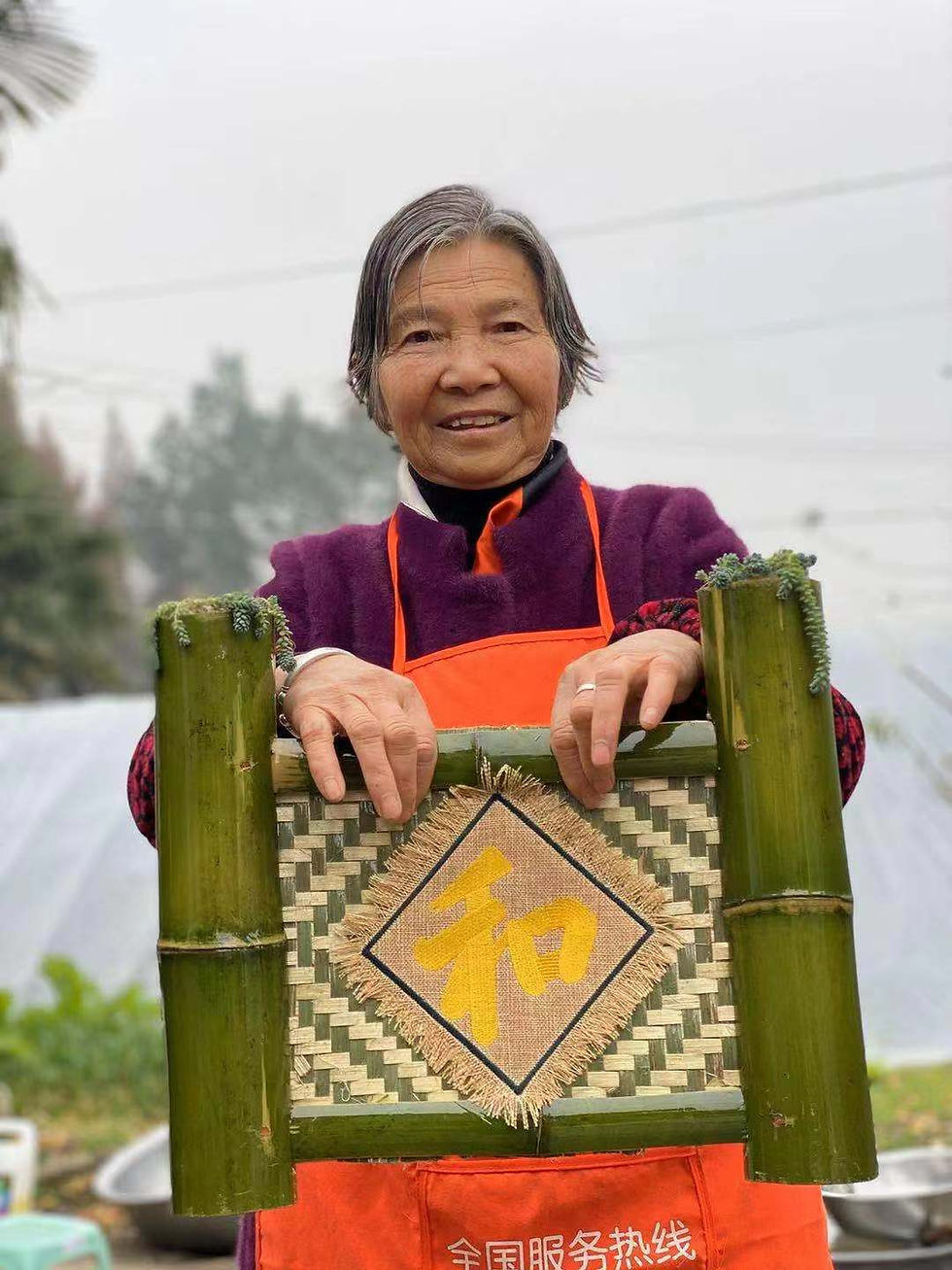
Central Village Symbiosis Project
In November 2019, as part of the Cross-Media Art Studio at Sichuan Fine Arts Institute, I joined the inaugural “Central Village Art and Rural Symbiosis Project” in Chengdu, collaborating with local organizations to explore how art can engage with rural life to revitalize folk arts, culture, and industry.
About Our Project

During this practice, we centered our approach on the concept of "productive symbiosis," focusing on the authentic conditions of daily production and life in the village, and seeking opportunities to translate these realities into artistic creation. In the project, I was involved in research, observation, and dialogue, and through sustained interaction with local residents, I deeply experienced how art and everyday rural life can nourish each other, generating works imbued with local sensitivity and social significance.


01. Local Development Demands
Starting from the villagers’ spontaneity and autonomy, the goal is to strengthen the cohesion among villagers and the community as a whole, laying a foundation for Central Village’s future modernization of agriculture, ecological improvement, and integrated cultural industry development.
Needs Analysis
02. Local Creative Demands
Based on the authentic context of Central Village, we explore the possibility of “symbiosis between art and rural social realities,” avoiding mere reliance on visual symbols attached superficially to rural appearances. Instead, the aim is to realize creative practices that deeply integrate with the lived experiences of the site.
03. Impact Demands
To provide new methodological pathways for rural governance, expanding its diversity and sustainability, while developing replicable governance models that showcase the unique perspectives of artistic intervention. At the same time, this symbiotic process feeds back into the art field, offering vibrant subjects and methods for creative exploration.
Practice Approach
In the practice, our team immersed ourselves in the villagers’ production and daily life environments, collaborating closely with them to discuss and develop creative plans that enhance the quality and enjoyment of life. Our creative process adopts a point-to-point collaborative model, directly transforming villagers’ courtyards, yards, and living spaces into exhibition venues. The works are not confined to tangible objects but focus more on creating new atmospheres and shared experiences. For us, art is not only a medium of expression but also a bridge connecting people, life, and community.
Artistic Creation
Central Village, located on the outskirts of Chengdu’s urban center, boasts a long-standing agricultural tradition and a distinctive regional culture, most notably renowned for its famous Doubanjiang (fermented chili bean paste). This rural community, situated adjacent to a rapidly modernizing city, faces the dual pressures of urban expansion and agricultural modernization reforms, navigating a complex transformation where tradition and modernity intersect. Its geographical location and developmental context make it a vital case for exploring how rural areas can maintain cultural consciousness and vitality amid modernization.


During our research, we observed that although the material living standards in Central Village have significantly improved, the spiritual and cultural needs of villagers—especially the elderly—remain insufficiently met. Many attempt to fill this spiritual void through diverse material activities, highlighting a scarcity of rural cultural spaces and limitations in spiritual expression. Simultaneously, the changes brought by modernization have intensified anxieties within the village regarding identity and cultural heritage.
These findings prompted us to reconsider our approach to artistic intervention. We realized that merely engaging with surface-level visuals or symbols could not address the deeper cultural needs of the villagers. Instead, art must become a practice that closely integrates with village life, responding meaningfully to its real contradictions and spiritual demands. Given Central Village’s emphasis on food culture, we chose “food” as our medium to carry out a collaborative creation of fusion cuisine.
As “new villagers,” we joined local residents in blending external cooking techniques with traditional local dishes, sharing this culturally diverse meal within villagers’ own courtyards. Through this process of co-creation and sharing, art becomes a bridge connecting culture, daily life, and individual emotions—activating new possibilities for rural spiritual and cultural life, while directly addressing Central Village’s questions of identity and future amid modernization.


















